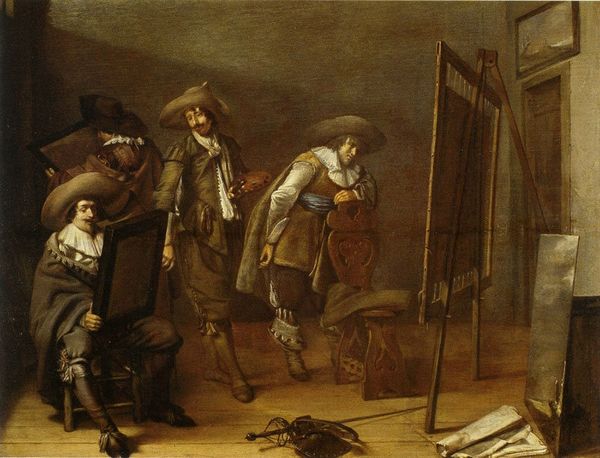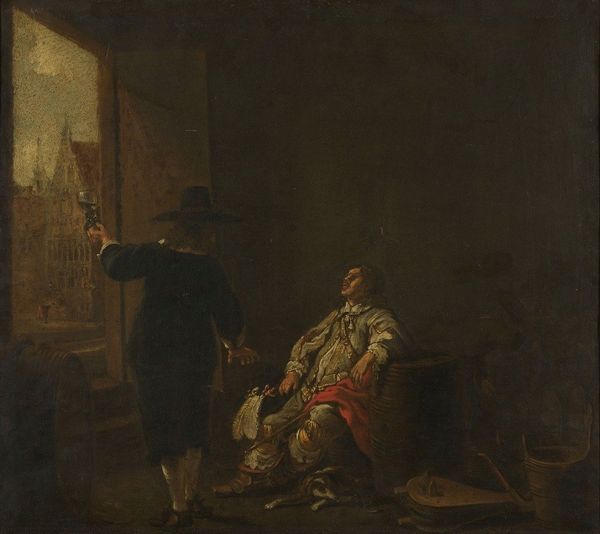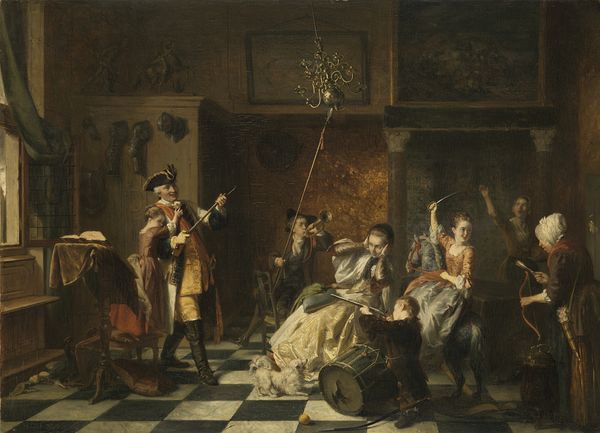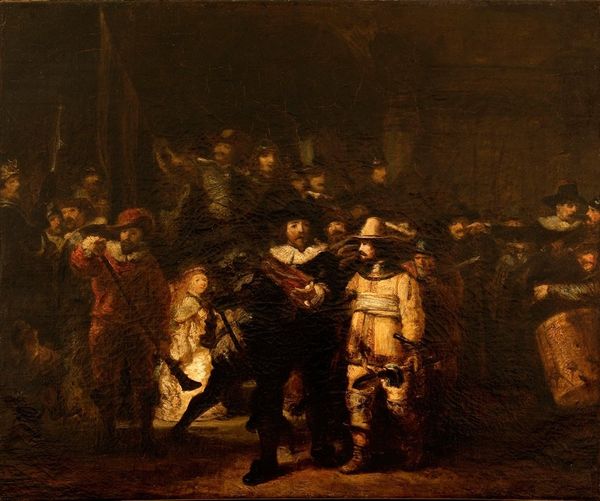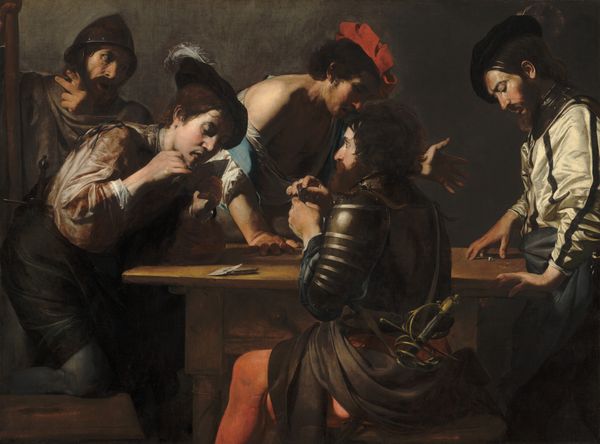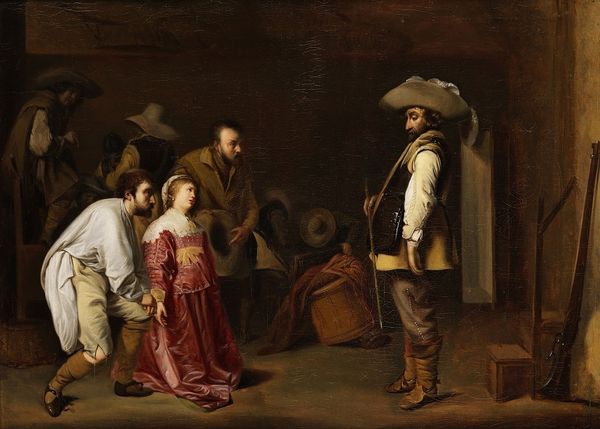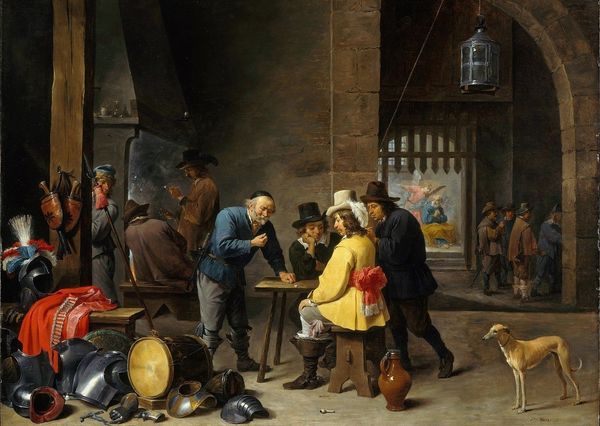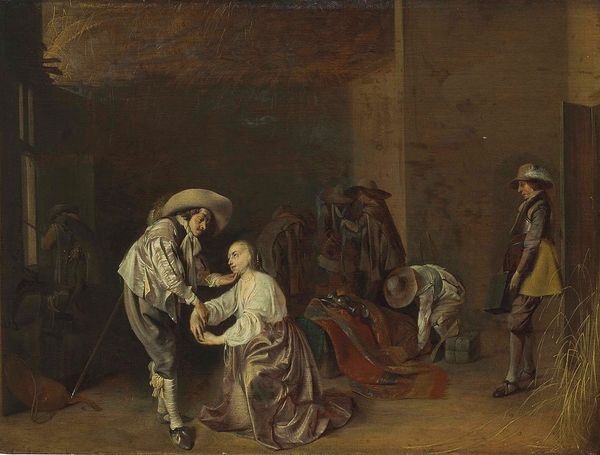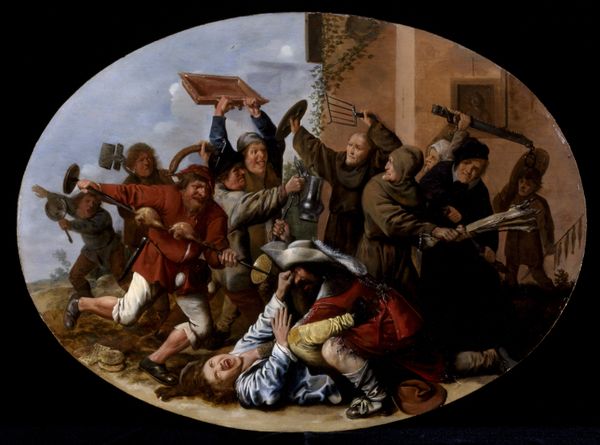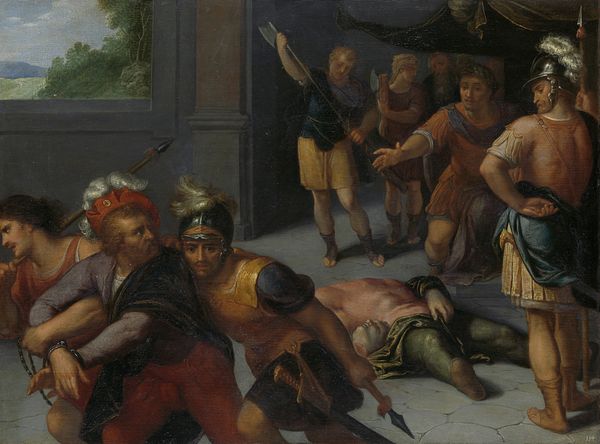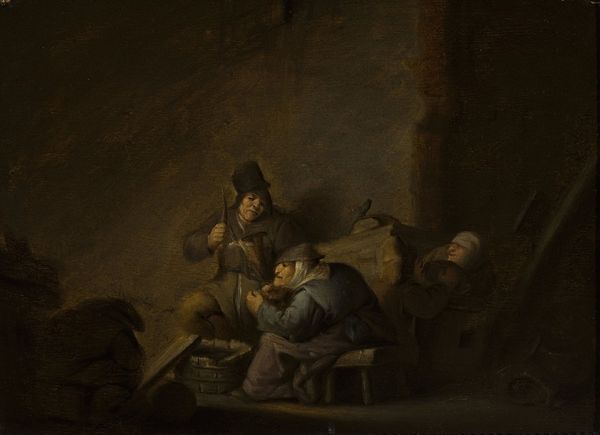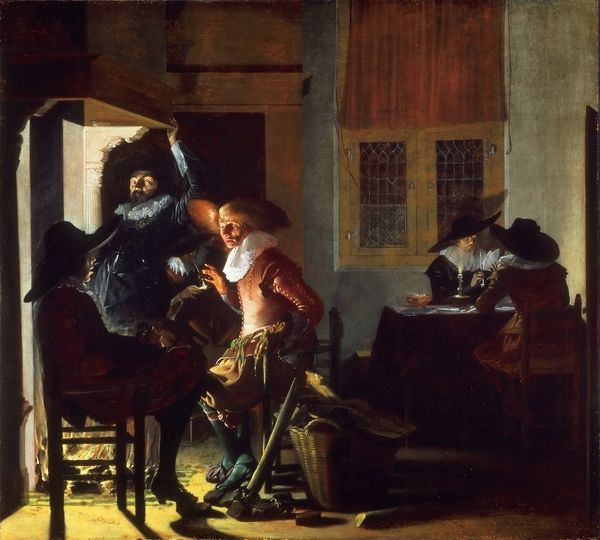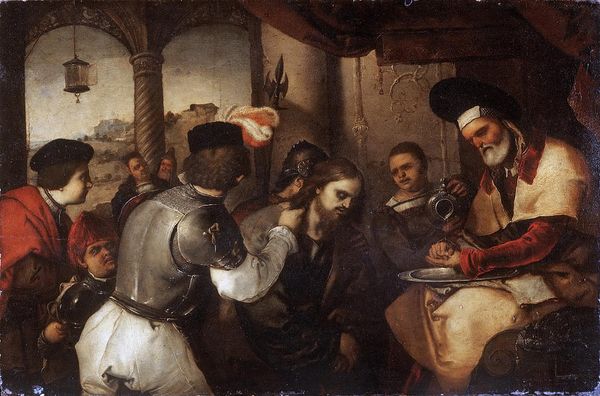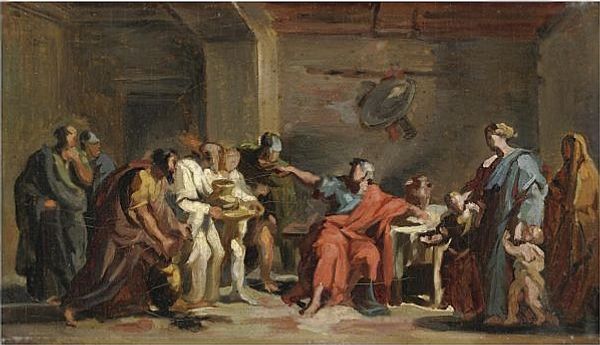
painting, oil-paint
#
narrative-art
#
baroque
#
dutch-golden-age
#
painting
#
oil-paint
#
figuration
#
oil painting
#
genre-painting
#
portrait art
Copyright: Public domain
Curator: Looking at this oil painting titled "Officers Playing Tric Trac," attributed to Willem Cornelisz Duyster, what captures your eye initially? Editor: The interplay of light and shadow immediately strikes me. It's dim, almost claustrophobic, yet there's a focus on the textures of clothing and the faces of these figures gathered around the game. I'm interested in what that tabletop might be made of. Curator: Exactly. Considering its portrayal of officers engaging in leisure, it inevitably invites questions about the power structures at play within 17th-century Dutch society. Who were these men, and what privileges did their roles afford them? This work intersects with studies of masculinity and social status in the Golden Age. Editor: Indeed. The materials employed – oil on presumably wood panel or canvas, were relatively accessible, but the skill involved in rendering fabric folds and facial expressions would suggest a considerable apprenticeship. It’s the kind of labor-intensive practice that denotes a particular social class itself. What kind of materials did those clothes consist of, what are the means of textile production from this era? Curator: Thinking more deeply, I’m reminded that even depictions of recreation were rarely neutral. Consider the game itself: Tric Trac, a form of backgammon. Its presence invites considerations of competition, chance, and strategic thinking - ideas mirrored in contemporary trade and political machinations. The image subtly upholds and celebrates societal structures. Editor: That reading resonates. And observing closely, the implements they use for smoking – those clay pipes, their very fragility underlines the transient nature of wealth and pleasure. I am always interested in who the local manufacturers were, what conditions people lived in and under what economy this tableau emerged from. Curator: I completely agree; focusing on the transient allows a deeper read. The dark interior might hint at broader narratives. We see them enjoying a moment, while larger sociopolitical concerns are excluded from this small stage. Editor: Thinking about the work as a tangible thing – canvas stretched, ground pigments mixed with oils, applied laboriously by hand… these processes tell us just as much about the world that enabled the work to come into being. Curator: I like how we can both engage with this scene through various means and end at somewhat compatible places. Editor: Agreed, viewing the same work using very different sets of concerns definitely can take the spectator into some unique, challenging places.
Comments
No comments
Be the first to comment and join the conversation on the ultimate creative platform.
